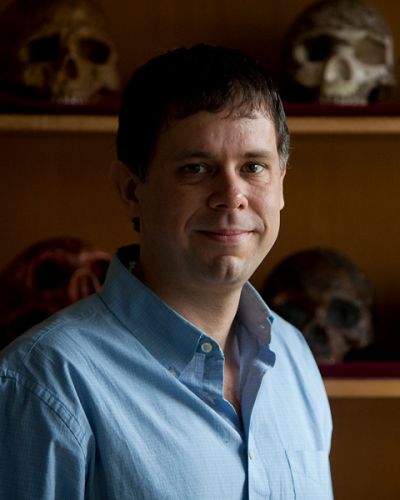Rolf Quam | Source | Professor of Anthropology at Binghamton University, State University of New York

Rolf Quam
Rolf Quam is a paleoanthropologist at Binghamton University, State University of New York who focuses on evolutionary aspects of the cranium and mandible. In particular, he has collaborated on a long-term research project to reconstruct the hearing capacities in our fossil human ancestors. In addition to reconstructing an aspect of sensory perception, this research line has shed new light on the process of language evolution, including in our closest evolutionary relatives the Neandertals. Since 1996, he has participated in the ongoing fieldwork being carried out at the Pleistocene locality of Atapuerca in northern Spain. These sites contain some of the richest human fossil bearing deposits in the world and represent the earliest evidence for incipient mortuary practices in the fossil record. During the course of his research, Quam has personally studied a wide diversity of original human fossils from Europe, the Middle East and Africa spanning the last 3 million years of human evolution.
-

Binghamton University, State University of New York
Professor of Anthropology
-
News - Scientists Study Neanderthal Hearing Ability - Archaeology Magazine
BINGHAMTON, NEW YORK—According to a CNN report, a new study of Neanderthal ear bones suggests […]
Article -
Scientists Discover Evidence Of A 435,000-Year-Old Murder
Two episodes of "localized blunt force trauma" to the skull with "an intention to kill." 3-D imaging to re-create the injuries. Bodies dropped down a 43-foot-deep vertical shaft into a mass grave. A murder case — more than 435,000 years old.
Article -
Neanderthal fossils reveal signs of a devastating population collapse
Neanderthal fossils show a major population drop 110,000 years ago. Researchers link this to reduced genetic diversity.
Article
-
The oldest fossils that show Neanderthal features are found in Western Europe, so researchers generally believe the Neanderthals originated there. However, migrations of different species from the Middle East into Europe may have provided genetic contributions to the Neanderthal gene pool during the course of their evolution.



